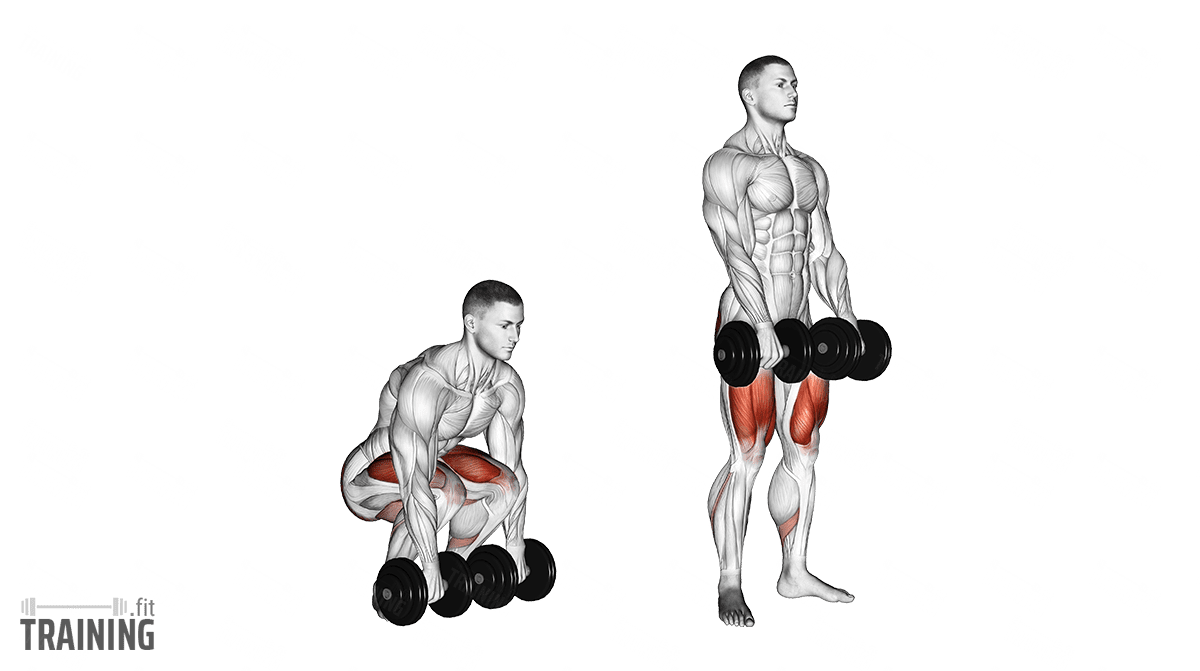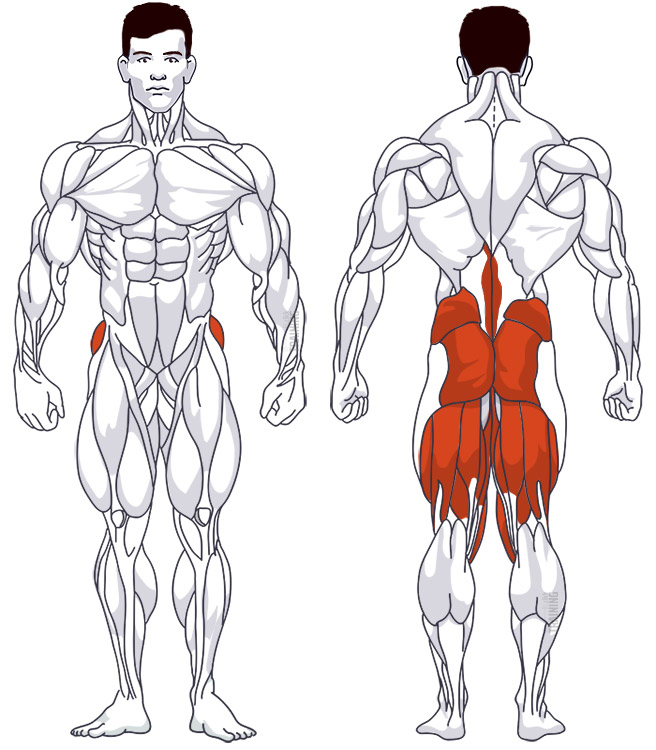Dumbbell Deadlift
Compound exercise, Free weightsOverview

Main muscles
- Thigh: Thigh flexor
(Musculus biceps femoris) - Buttocks: Large gluteus maximus
(Musculus gluteus maximus) - Back: Back extensor
(Musculus erector spinae)
Training plans
Here you can find example plans for dumbbell deadlift training:
Dumbbell Deadlift: Basics and alternatives

Involved main muscle groups:
Dumbbell Deadlift
Dumbbell deadlifts are a popular alternative to barbell deadlifts for home workouts, but they’re just as challenging. The movement is essentially the same: You lift the weight while standing and leaning your upper body forward, extending your legs and straightening your back. This classic compound exercise primarily works multiple muscles in your legs, butt, and back.
You can also try dumbbell stiff legged deadlift as an alternative.
Correct execution
Deadlifting is one of the most error-prone exercises, and that includes the dumbbell variation. For dumbbell deadlifts, the problem is amplified by the seemingly endless recommendations for proper execution.
Some people perform this exercise with straight legs, while others do deadlift-squats with a very low starting position (see article image above). In between, there are numerous other variations, with the dumbbells either in front of or next to the body.
Below, we describe dumbbell deadlifts in a way that closely resembles the barbell version, so the form and training stimulus (depending on the weight) are comparable.
Video tutorial
Step-by-step instructions
Place your dumbbells on the floor next to your feet at a slight angle, so they’re centered next to your midfoot.
Bend your knees and hips, and grab the dumbbells firmly in an overhand grip with both hands. When you lift the dumbbells (see further steps), they’ll be next to your body.
Create a slight arch in your lower back while keeping your overall back straight. Your head should also be in line with your hips. Your back must not round at any time. Engage your core. You’re now in the starting position.
Lift the weight off the floor with your arms extended, simultaneously straightening your legs and upper body. Try to lift the dumbbells in a straight line.
Finish the movement when you’ve lifted the dumbbells to hip level and pushed your hips forward slightly. Don’t hyperextend your back. Hold this position for a few seconds.
Lower the dumbbells in a controlled manner by bending your legs, leaning your upper body forward, and returning to the starting position.
Alternative execution: More leg involvement
As mentioned earlier and shown in the article picture, you can perform dumbbell deadlifts with more leg involvement. To do this, follow the instructions above, but lower your hips further.
When lifting the weight, your thighs are more engaged in the movement, similar to a squat. This is also known as the dumbbell deadlift squat. Regardless, make sure you maintain proper back posture with this form of execution.
Common mistakes
Incorrect back posture is a major issue with dumbbell deadlifts, as it is with all other deadlift variations. Ensure your back is never rounded throughout the movement. Your lower back should have a slight arch, while the rest of your back, including your head, should form a straight line.
Perform the movement quickly but in a controlled and smooth manner. Don’t jerk the weight up or drop it abruptly.
Avoid hyperextending your back in the final position. This is a common mistake seen at the gym. The end of the movement is reached when you’re standing upright, your hips have pushed forward slightly, and your back is straight. There’s no need to lean back, creating a pronounced arch. Maintain the slight arch in your lower back even at the end of the movement.
Check out other tips on regular barbell deadlift mistakes here to get an idea of what should generally be avoided.